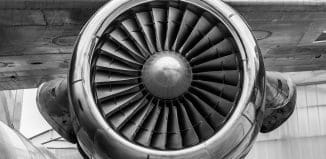Will the growing use of unmanned platforms breach the privacy of Israelis?
This post is also available in:  עברית (Hebrew)
עברית (Hebrew)
 Israel is a “super power” of unmanned air systems (UAS) or drones as the Americans prefer to call them. This debate about the use of these unmanned flying platforms, may reach Israel in a few years.
Israel is a “super power” of unmanned air systems (UAS) or drones as the Americans prefer to call them. This debate about the use of these unmanned flying platforms, may reach Israel in a few years.
Here because of the size of the country it may be a very hot issue.
The imminent proliferation of unmanned aircraft in American skies has stirred a debate which veers between excitement at the possibilities to deep concern they may be deployed to snoop on law-abiding citizens.
Congress has ordered the Federal Aviation Administration to open up airspace to unmanned aircraft by October 2015, a decision expected to see thousands of drones criss-crossing the sky within a few years.
According to the “Global Post ” website supporters of the move point to a vast range of applications which drones could be used for — tracking the progress of wildfires, helping to find lost skiers, identifying criminals or mapping inhospitable terrain.
“The possibilities … are endless,” said Ryan Calo, an expert in law and emerging technology at Stanford University’s Center for Internet and Society.
“What are drones but flying smartphones, one app away from indispensable? We could see drones accompanying early morning joggers, taking sport, wildlife and other photography to a new level.”
While the public perception of drones is associated with their use in war, the Association for Unmanned Vehicle Systems International (AUVSI) believes they can “save money, time and lives” in civilian life.
The AUVSI also believes increased drone use will create 100,000 jobs by 2025, injecting billions of dollars into the economy.
Civil liberties groups have a more guarded view of the likely darkening of American skies by unmanned aircraft.
The Electronic Frontier Foundation (EFF) warns drones can intercept messages on wireless networks, monitor up to 65 people and carry eagle-eyed technology that can identify the brand on a carton of milk from 18,000 meters.
When a drone was used to assess damage from an earthquake in Italy in September, it also stumbled across a marijuana plantation and duly identified those individuals responsible.
Similarly, while US Customs deploys drones to patrol the border, their unmanned aircraft are sometimes used to help local police.
“Rules must be put in place to ensure that we can enjoy the benefits of this new technology without bringing us closer to a surveillance society in which our every move is monitored, tracked, recorded and scrutinized by the government,” the American Civil Liberties Union has warned.
The potential implications of widespread drone use mirrors the problems faced by Internet giant Google, which was fined $7 million on Tuesday after it emerged that vehicles snapping photos for its Street View images were also gathering information from private Wi-Fi hotspots.
The FAA meanwhile estimates that more than 7,000 small unmanned aircraft will dot American skies over the next five years.
When US airspace opens up in October 2015, drones will be used in six test locations. The tests are designed to help the FAA draw up rules governing the use of unmanned aircraft.
Currently drones are allowed to fly on public service missions — used by fire brigades or customs for example — or for recreation, provided the smallest are visible to the naked eye.
Thirty US states are working on legislation to limit the use of drones, a move welcomed by the ACLU.
The rights group has argued that states should demand law enforcement seek warrants for drone use and prohibit the publication of images from drones or equipping them with weapons such as tasers, rubber bullets and tear gas.





























